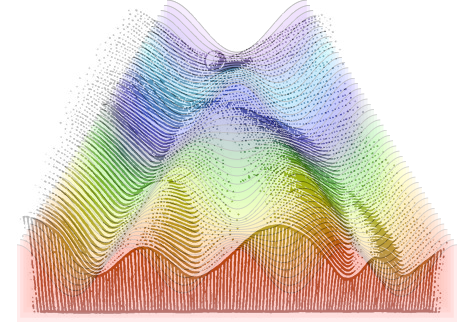
|
|
|
Sui HuangWaddington’s Epigenetic Landscape: How catastrophes may explain Goldschmidt’s “Hopeful Monsters” hiding in the Adjacent Possible Sui Huang Institute for Systems Biology, Seattle e-mail: sui.huang@isbscience.org
Conrad Waddington’s epigenetic landscape captures the principle of genetic assimilation, providing a “geometric explanation” for the interplay between an inborn (genetic) proclivity of an individual organism to respond to an environmental stimulus with a particular phenotye, and the fixation of said phenotype by a genetic mutation. The explanatory power of the landscape “metaphor” is yet another manifestation of Wigner’s “Unreasonable effectiveness of mathematics in the natural sciences”. For, meanwhile, the mechanistic-mathematical model of the epigenetic landscape has been established, based on gene regulatory dynamics and the “least action path” in acting against regulatory constraints. But beyond genetic assimilation, a broader treatment of the dynamics of gene regulayory networks that invokes bifurcations and constrains imposed by the physics of the genome may explain the abrupt (homeotic) realization of unseen phenotypes that “exist” in the “Adjacent Possible” (as coined by Kauffman), the space adjacent to the actualized phenotypic space of a genome – here are Goldschmidt’s Hopeful Monsters. In this talk I will explain the underlying theoretical premises, some experimentally supported, and propose new ideas for using the extended epigenetic landscape idea to explain saltational evolution. |

